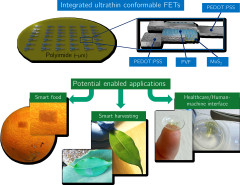Authors: Neel Kanwal, Farbod Khoraminia, Umay Kiraz, Andres Mosquera-Zamudio, Carlos Monteagudo, Emiel A.M. Janssen, Tahlita C.M. Zuiverloon, Chunmig Rong, Kjersti Engan
Published on: March 12, 2024
Impact Score: 7.4
Arxiv code: Arxiv:2403.07743
Summary
- What is new: The research introduces a novel application of a mixture of experts (MoE) scheme for identifying artifacts in whole slide images (WSIs) for cancer diagnosis, focusing on five types of artifacts.
- Why this is important: Histopathology for cancer diagnosis faces challenges due to artifacts in WSIs, which can lead to incorrect predictions by deep learning algorithms.
- What the research proposes: A mixture of experts (MoE) scheme is proposed, using independent binary deep learning models to detect specific artifacts and a fusion mechanism to ensemble predictions.
- Results: The MoE schemes, particularly the DCNNs-based MoE, outperform simpler multiclass models, achieving 86.15% F1 and 97.93% sensitivity scores on unseen data.
Technical Details
Technological frameworks used: Deep Convolutional Neural Networks (DCNNs), Vision Transformers (ViTs)
Models used: Mixture of experts (MoE), independent binary deep learning models
Data used: WSIs from different hospitals and cancer types
Potential Impact
Healthcare diagnostics, digital pathology companies, and AI diagnostics software developers
Want to implement this idea in a business?
We have generated a startup concept here: ClearPath AI.



Leave a Reply